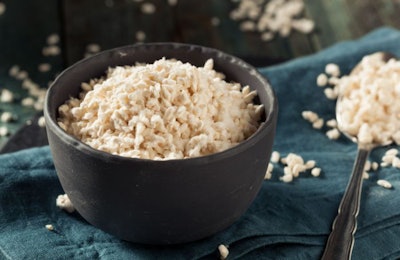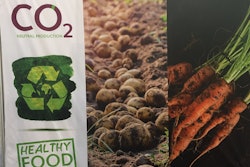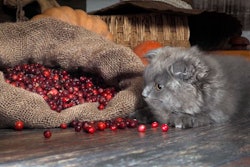
The fungus Aspergillus oryzae, known as koji, has a long history of use in East Asia in human diets. One company, Wild Earth, has begun using koji in dog treats, but they face regulatory and consumer acceptance challenges similar to those of other novel ingredients, such as algae or insects.
"Koji, for me from a food science stand point, is really interesting because it's got such a long history of usage,” said Ernie Ward, DVM, Wild Earth chief veterinary officer and founder of the Association for Pet Obesity and Prevention. “The Japanese have published tons of research on it, but in the West it's relatively unknown. So it's fascinating to uncover this food that's abundant in Asia, but here, people are going, wait, what, Koji? I've never heard of this before."
Nutritional aspects of koji in pet treats
Along with its history, koji interests Ward from a nutrition, health and safety standpoint.
"When you look at the amino acid profile, it's pretty darn impressive,” said Ward. “The cool thing about koji is that because it's been cultivated by the Japanese for thousands of years, they've refined it. So, it's super safe. Like for example, Koji doesn’t spin off any aflatoxins. Through [artificial] selection, as they've been farming this stuff, they bred out the bad part.”
There’s anecdotal evidence that koji may have digestive health benefits, noted Ward, but Wild Earth doesn’t plan to market their koji pet treats with health claims.
Regulatory difficulties for Koji as a pet food protein
Wild Earth has created a dog treat using koji, but regulations stand in the way of using it as a protein source in pet food.
“If an ingredient is GRAS or defined by AAFCO [Association of American Feed Control Officials], it does not mean that it is approved for all uses,” said Ryan Yamka, PhD, founder of Luna Science and Nutrition, a pet food industry consultancy, and chief scientific officer for Earth Animal Ventures. “Aspergillus oryzae is approved as an enzyme microbial source in animal feeds. It is not approved a source of protein. As a result, the company would be required to seek approval from the proper regulatory agencies to get Aspergillus oryzae approved as a protein source. This would require them to provide information such as raw materials, process of growing, quality control, food safety, performing digestibility studies in the target animal (not in-vitro) and identifying any potential toxicity.
“This would be no different than marine microalgae recently getting approved at the AAFCO meeting this past July for adult dogs. Most people are aware algae is a good source of DHA and it is in many baby formulas. However, it wasn’t approved for adult dogs.”
Difficulties with consumer acceptance of koji in pet products
Pet food buyers increasingly demand simple lists of ingredients, a trend called clean label. Especially within the past decade, demands for “clean” ingredient labels have risen for both human and pet foods, but the exact definition of a clean label remains amorphous, said Steve Peirce, CEO of rice-based ingredient supplier Ribus, Inc., in a video from Petfood Forum 2017.
“When I travel all over the world, people ask me ‘what is clean label?’ and I usually say ‘number one can your consumer pronounce it? … With the internet, emails and social media people are very in tune to what is in a product,” Peirce said.
Considering that koji is still relatively unknown in the United States, might consumers be concerned about seeing its Linnaean name, Aspergillus oryzae, or learning from a Google search that Aspergillus is a classified as mold and that some species can be pathogenic in humans?
“Starting out with an ingredient that most people cannot pronounce goes against the current trends of going more natural and using ingredient sources that people recognize,” said Yamka. “If they have to google the ingredient to look it up the consumers could be turned off. Simply type in Aspergillus and the websites that rise to the top are information about fungus and symptoms in humans.
“If you type in the whole name Aspergillus oryzae, most of the websites state a fungus used to ferment things,” Yamka said. “Will a consumer pay a premium for that? Likely not. They [Wild Earth] will have to do a lot of marketing and comparison studies (vs chicken, beef, etc) for nutritional adequacy to get buy-in from veterinarians and consumers.”
However, one veterinarian, Ward, is already sold on koji, and believes that its success in other industries bodes well for success in the realm of pet products.
“Our market studies have shown considerable interest and acceptance from pet owners in fermented foods and fungi such as our koji dog treat,” said Ward. “In general, we're very excited to bring our message to market and believe we've found a segment very supportive of safe and nutritious alternative protein and food sources for dogs. We understand and accept the challenges of bringing anything new into pet care, but are committed to helping solve some of the future's protein problems.”
“That’s the exciting thing, doing something in pet that hasn't been done before but has been done in lots of adjacent industries,” Ward said. “It's clear that it'll work.”
The livestock industries in Asia and Africa have accepted koji as a feed additive, he noted. Introducing koji into pet food is a U.S. innovation, but it won’t be the first time global markets have adopted an East Asian ingredient made with Aspergillus oryzae. Koji has acceptance worldwide as a means to make soy sauce and sake. Other fungal products, like blue cheese and beer, are also widely accepted in human foods.
Wild Earth is betting that regulatory and acceptance challenges won’t keep pet owners from buying dog treats made from koji.

















